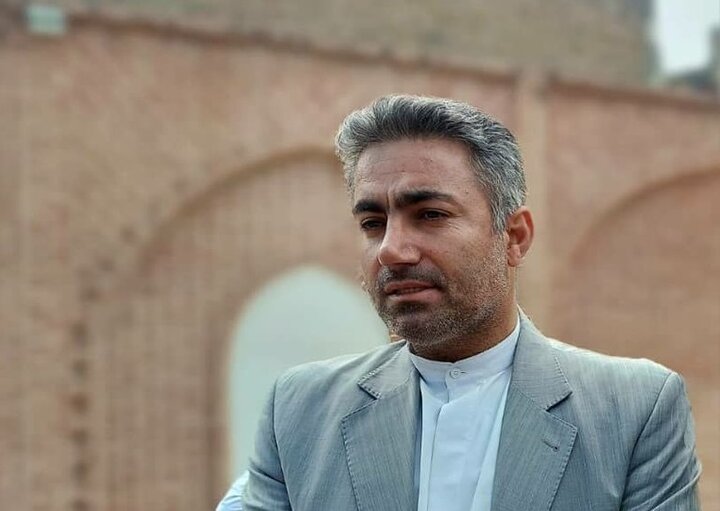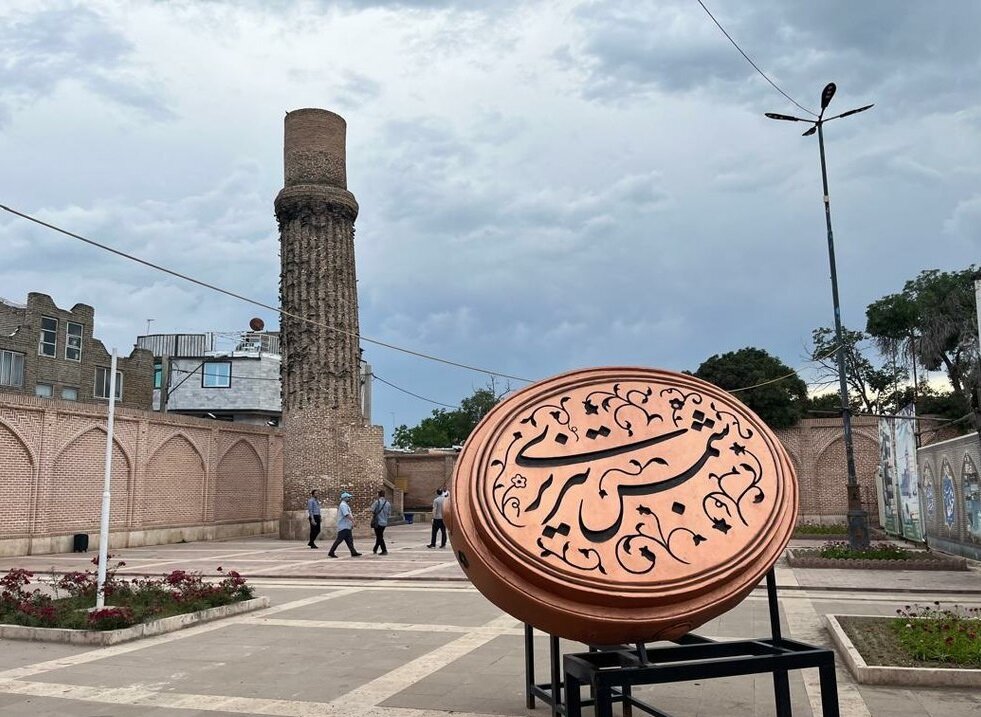Khoy, West Azarbaijan – The Iranian government has allocated 30 trillion rials (approximately $375,000) to advance the long-standing construction of Shams Tabritsi, the famous Sufi mystical and spiritual leader of the famous Persian poet Rumie.
Speaking to the Tehran Times, Afrasyab Geravand, director of the Khoy County Cultural Heritage, Tourism and Handicrafts Bureau, provided new details about the archaeological significance of the site and its continued efforts to develop it into a major cultural landmark.
“Archeological excavations carried out in 2006 and 2018 revealed a vast cemetery of 50-60 centimeters deep. The cultural layer was tracked about 6 meters deep, but the virgin soil was never reached.”
He added that the ceramic fragments and cultural artifacts excavated at the site were dates that the area returned to the Seljuk, Ilhanid, Timrid and Safavid periods. “The architectural stratigraphy indicates a significant change in the city of Khoy between the Middle Ages and the late Islamic period,” he pointed out.
The Strict Minaret of Safavid Roots
Geravand also highlighted the impressive historical structure of the site, a Safavid-era minaret known as the Shams minaret, a local Safavid-era minaret. “Historical records suggest that the Safavid dynasty Shah Ismail I built a palace with three minarets on this site. Today, only one remains. It features 28 rows of decorative “Ram Heads” and is built with a total of nearly 1,148, intricate brickwork,” he said.

Afrasyab Geravand
In the past centuries, minarets have even been used to make Islamic calls to prayer, he added. Historical illustrations by Ottoman cartographer Matrakuchi Nanus depict three minarets alongside religious buildings in the same location. Archaeological evidence from 2018, including blue, white and turquoise glass-walled tiles, constitutes the existence of once significant religious structures.
Historic Trade Hub
Located in Iran’s Western Azabaijan province, Khoy has long been a crossroads of culture and commercial. “Historically, the city has served as an important trading post, evidenced by the passage of four caravan salées in its historic bazaar and two branches of Silk Road through the area,” Guerraband said.
He said that Shah Abbasi Caravanserai of Khoy was on the UNESCO World Heritage List last year along with 53 other historic caravanserais in Iran.
Mausoleum Project Progress
The Shams Tabrizi Mausoleum Project was launched in 2018 in the northwest part of the heritage site. It covers 3,200 square meters within an area of 7,000 square meters, reaching just 30% completion by early 2023.
The recent 3 trillion rial injection is intended to quickly track its completion. “Construction is currently underway and we hope that the project will be completed within the next year or two,” Geravand said.
Site improvements and urban integration
Despite advances, Geravand acknowledged that unsightly infrastructure, including electrical wiring, trash bins and outdated facilities, remains compromised in the visual integrity of the site. He highlighted the urgent need for rehabilitation of the landscape and redesigning the main entrance.
He also revealed a proposal called “From the shrine to the spirit us.” It aims to connect the Shams complex with a shrine near Seyed Balor, just 1 km away. “The initiative currently under review by the Khoy municipality envisages the integration of the Shams Heritage site with other important religious and cultural landmarks in the city,” he said.
Furthermore, concerns about the stability of trending minarets were addressed in 2018 with integrated measures, confirming that the structure is currently safe and stable.
Geravand also noted that three archaeological ditches were dug throughout the site before construction began. “Fortunately, no significant historical layers were found in the Northern Section, allowing the project to move forward with approval,” he said.
Shams Tabrizi (1185–1248), who had a major influence on rumi, remains a central figure in Persian mystical literature. He is the name of Diva e Shams e Tabrizi of Rumi, and is traditionally believed to have spent 40 days in spiritual spiritual discourse with Rumi of Konya before departing for Damascus.
The completion of his spirits at Khoy is expected to establish this site as a prominent destination for spiritual tourism and cultural heritage in northwestern Iran.
morning

